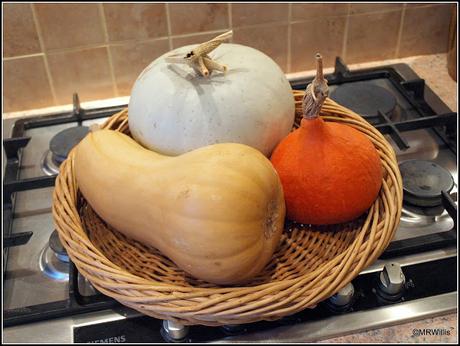
This is a recipe from Sabrina Ghayour's book "Persiana", with a few adaptations. For instance I have used Mint instead of Dill and Coriander, both of which I detest. Incidentally, if you haven't got this book I strongly recommend buying a copy. It contains loads of really great recipes, many of which are incredibly easy to make. Lots of them are suitable for vegetarians too.
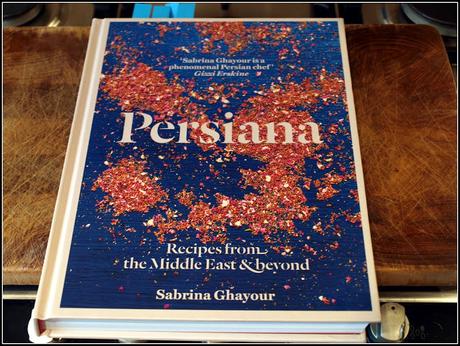
For copyright reasons I won't spell out the complete recipe, but will give you the gist of it.
The first thing to do is make a pesto. Not the usual type, with Basil and pine-nuts. This one has Pistachio nuts, Parmesan cheese, herbs (I used Parsley and Mint, but Sabrina uses Parsley, Dill and Coriander), lemon juice, olive oil, salt and chilli oil. The recipe calls for 3 tablespoons of chilli oil, but it doesn't give any indication of its strength. I suspect that a fairly mild version is intended. I used a dessertspoon of Portuguese Piri-Piri oil and it seemed just right.
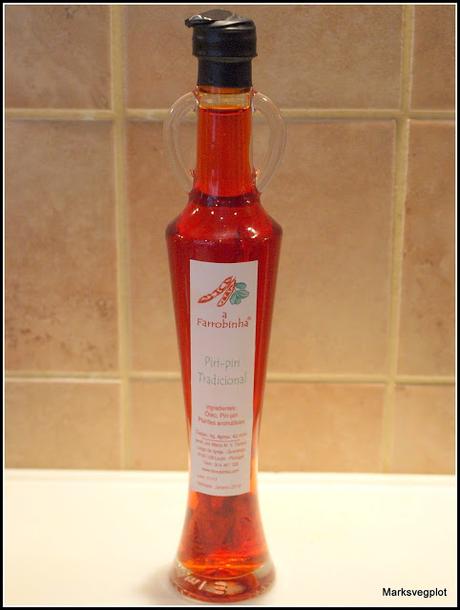
The pesto needs to have a texture I would describe as "gloopy" (not a technical term!) - in other words it should be spoonable but not too runny. You can make it in advance and keep it in the fridge until you need it, but I made mine about 6 hours in advance and kept it at room temperature so that it would remain fairly loose.
At some suitable point there is more prep that can be done in advance if you want. Remove and set aside the seeds from a pomegranate. Crumble a block of feta cheese - cover it with clingfilm, but let it get to room temperature so that it will not be too hard. Then of course you can prepare the main part of the dish - the Butternut squash. Cut it into quarters (lengthways) and remove the seeds. Again, set it aside until you are ready to start cooking.
The aim with the Butternut is to cook it until the flesh is soft and just slightly charred at the edges, so you will have to aim off for this and begin cooking at the appropriate time. Of course the cooking time depends to a certain extent on the size of the squash too. Sabrina Ghayour reckons that a medium-sized Butternut will serve 4 as a side-dish or starter, and 2 as a main dish, and her recipe suggests cooking it at 200C (180C for a fan oven) for 45 - 50 minutes. You will know when the squash is cooked because a pointed knife will slide easily into the flesh. By the way, the quartered squash is liberally anointed with olive oil before cooking - and I like to add a few grinds of fresh black pepper too.
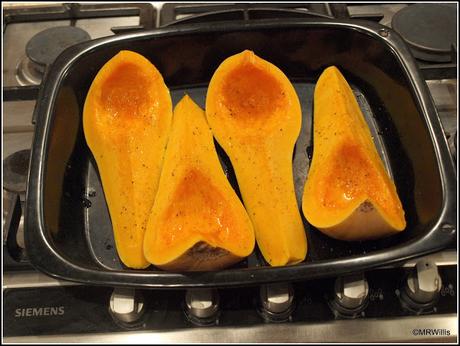
When the squash is cooked, slide it onto a suitable serving-dish and then add the other elements. Using a spoon, smear the pesto over the pieces of squash and then sprinkle the feta and pomegranate seeds on top of it. Hopefully the "gloopy" pesto will help the other bits to stay put and not fall off! Finally, you can add a few sprigs of a suitable herb as a garnish. I used Parsley.

To accompany this dish I served Middle Eastern style flatbreads and a nice salad (which included homegrown tomatoes, despite it being late November).
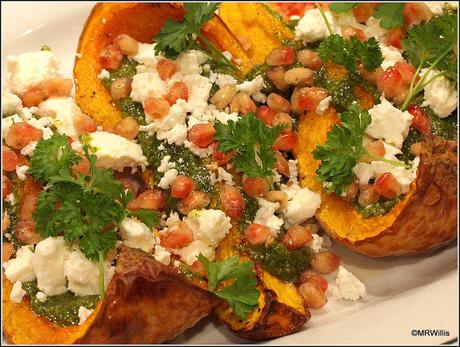
Apart from being easy to do, this dish is healthy and nutritious as well as being a very pleasing combination of sweet and savoury tastes and lots of different textures. The soft creamy squash and salty feta, the acid tang of the pesto with its little buzz of chilli, and the sweet firm nuggets of pomegranate all come together perfectly.
